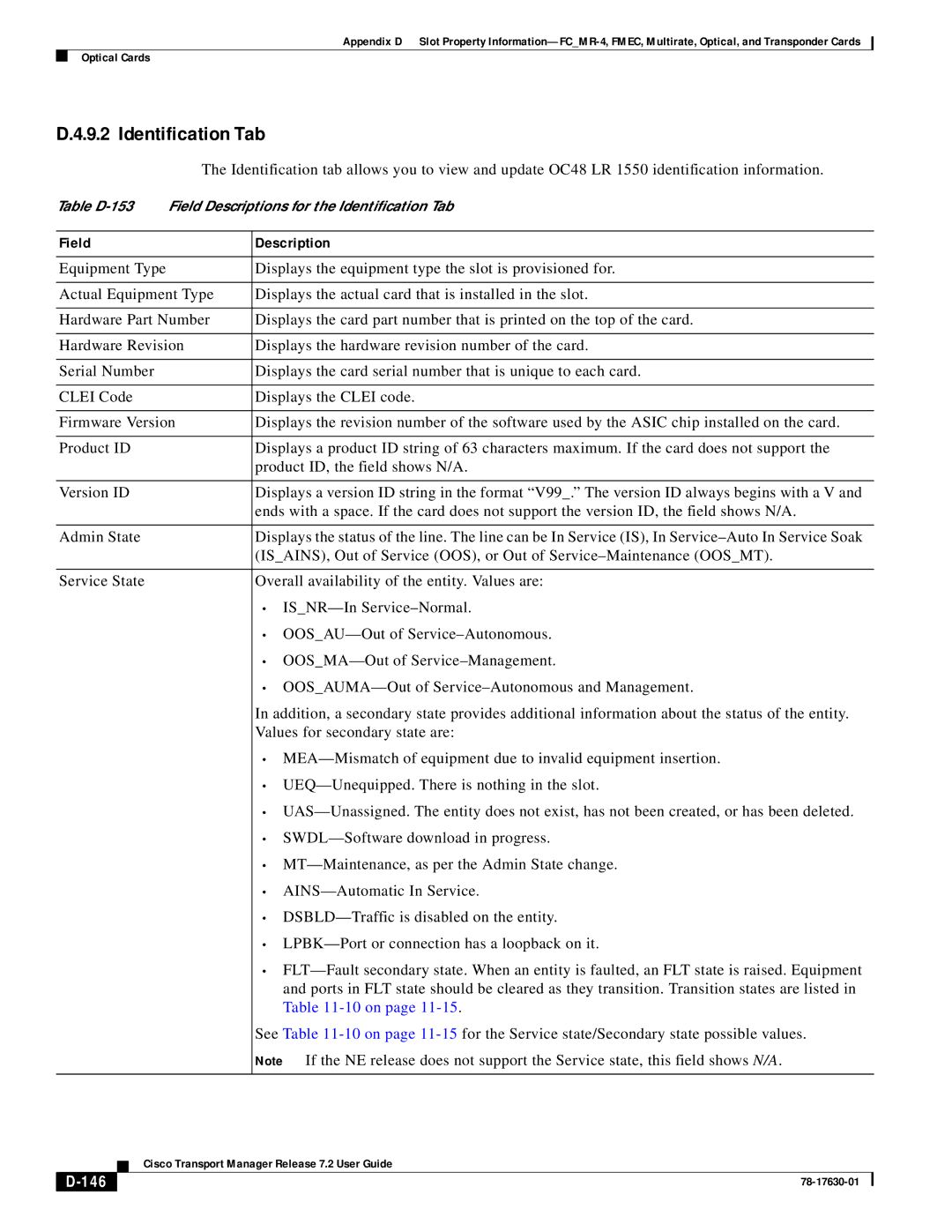
Appendix D Slot Property
Optical Cards
D.4.9.2 Identification Tab
The Identification tab allows you to view and update OC48 LR 1550 identification information.
Table | Field Descriptions for the Identification Tab | ||
|
|
| |
Field |
| Description | |
|
|
| |
Equipment Type |
| Displays the equipment type the slot is provisioned for. | |
|
| ||
Actual Equipment Type | Displays the actual card that is installed in the slot. | ||
|
| ||
Hardware Part Number | Displays the card part number that is printed on the top of the card. | ||
|
| ||
Hardware Revision | Displays the hardware revision number of the card. | ||
|
|
| |
Serial Number |
| Displays the card serial number that is unique to each card. | |
|
|
| |
CLEI Code |
| Displays the CLEI code. | |
|
| ||
Firmware Version | Displays the revision number of the software used by the ASIC chip installed on the card. | ||
|
|
| |
Product ID |
| Displays a product ID string of 63 characters maximum. If the card does not support the | |
|
| product ID, the field shows N/A. | |
|
|
| |
Version ID |
| Displays a version ID string in the format “V99_.” The version ID always begins with a V and | |
|
| ends with a space. If the card does not support the version ID, the field shows N/A. | |
|
|
| |
Admin State |
| Displays the status of the line. The line can be In Service (IS), In | |
|
| (IS_AINS), Out of Service (OOS), or Out of | |
|
|
| |
Service State |
| Overall availability of the entity. Values are: | |
|
| • | |
|
| • | |
|
| • | |
|
| • | |
|
| In addition, a secondary state provides additional information about the status of the entity. | |
|
| Values for secondary state are: | |
|
| • | |
|
| • | |
|
| • | |
|
| • | |
|
| • | |
|
| • | |
|
| • | |
|
| • | |
|
| • | |
|
|
| and ports in FLT state should be cleared as they transition. Transition states are listed in |
|
|
| Table |
|
| See Table | |
|
| Note If the NE release does not support the Service state, this field shows N/A. | |
|
|
|
|
| Cisco Transport Manager Release 7.2 User Guide |
|
